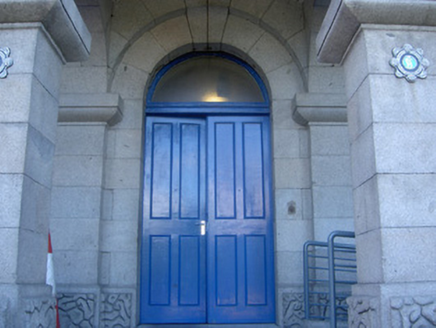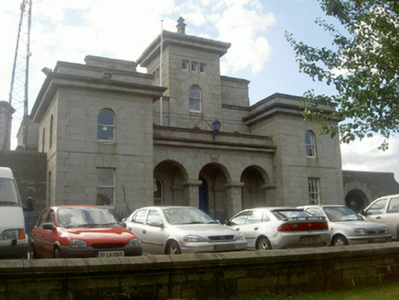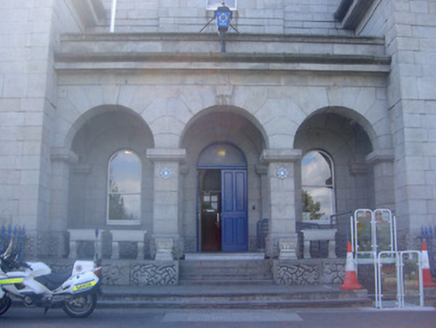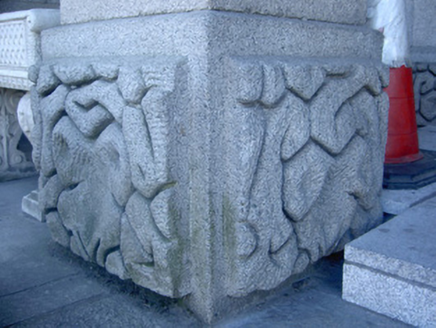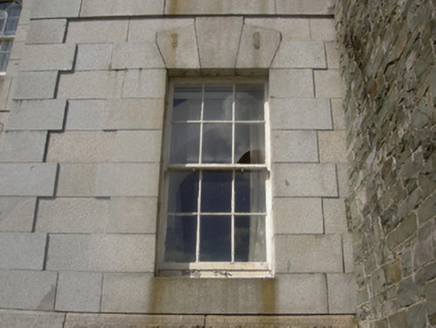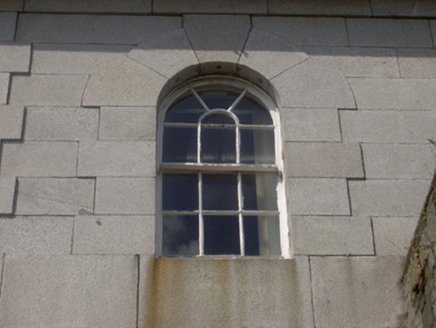Survey Data
Reg No
13707047
Rating
Regional
Categories of Special Interest
Architectural, Artistic, Historical, Social
Previous Name
Louth County Gaol
Original Use
Prison/jail
In Use As
Garda station/constabulary barracks
Date
1845 - 1855
Coordinates
304339, 306745
Date Recorded
10/08/2005
Date Updated
--/--/--
Description
Detached five-bay two-storey over basement former gaol, built c. 1850, now a Garda station. Square-plan with projecting end bays, recessed three-bay entrance to east with loggia, two-stage tower over entrance, extension currently undergoing construction to north. Hipped slate roofs hidden by ashlar granite parapet with tooled stone coping, ashlar stone corbelled chimneystacks with string course, vent to west, carved stone finial to tower, cast-iron gutters to west. Grey granite ashlar walling with raised quoins and banding, projecting cornice to end bays and tower, vermiculated plinth and bases to columns, smooth rendered walling to west. Square-headed (ground floor) and round-headed (first floor) window openings, painted timber six-over-six and one-over-one sliding sash; three-over-six sliding sash windows with fanlights to first floor; round-headed window openings flanking door, one-over-one sliding sash windows; square-headed window openings to tower. Round-headed openings to loggia accessed by five limestone steps, limestone platform, raised granite platform to door, vermiculated stone benches; round-headed door opening, tooled granite keystone, painted timber four-panel double doors, plain-glazed fanlight. Set on height overlooking grassed area to east, stone walls to north and south bounding rear site with further former gaol buildings.
Appraisal
Built between 1845 and 1853 to a design by John Neville, this fine Italianate former gaol holds a prominent position at a busy junction. Its grey stark walls reflect the gravity of its function. The rustication to the plinth and column bases are skillfully executed, adding subtle artistic detailing. This building forms a significant complex with the other remaining gaol structures including walls.
